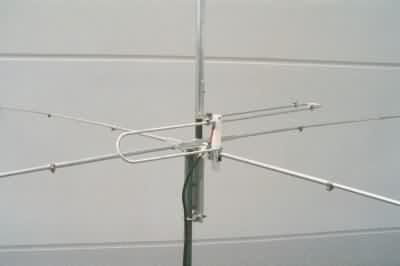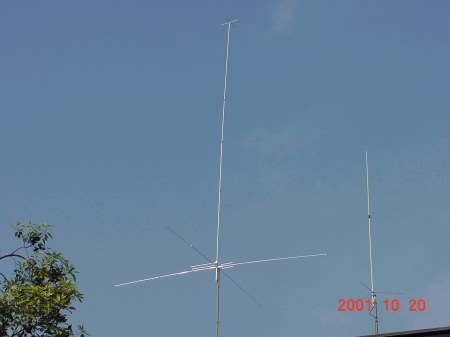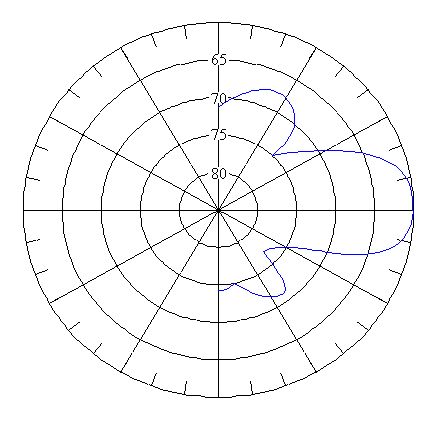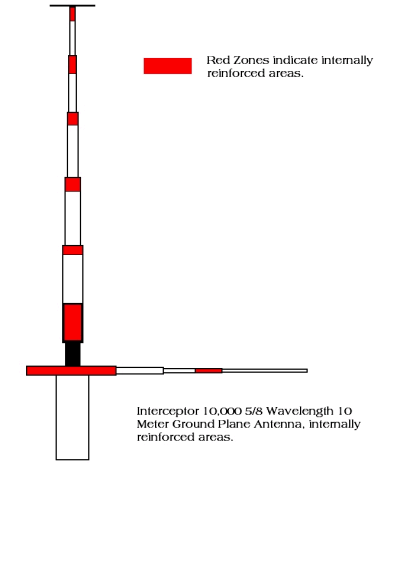| Author |
Message |
    
Admin
| | Posted on Wednesday, December 11, 2002 - 12:32 am: | 


|
I-10K Review
by Tech833
Since I work in the commercial radio field, I am accustomed to using very high quality components in radio systems. When I am asked to review CB antennas, I always wonder why many are built with such a light-duty purpose in mind. On hilltop commercial radio sites, antennas must work reliably and consistently through 100 MPH+ winds, ice, rain, high heat, etc. Most of the manufacturers of commercial antennas do an exceptional job of designing with this in mind and their products last for years and years without a second thought. The LAST thing the local police dept. wants is for their repeater station antenna to fail in the middle of a rainstorm, right?
CBers living in windy, snowy or icy winter areas, know that antenna replacement and staying off the air until winter is over has been looked at as ‘part of the territory’. Copper Electronics sells a lot more base station antennas in the winter than any other time of year, likely due to storm damage. All of the commercial quality antennas I have installed skate through the seasons without a second’s thought. The I-10K is the closest thing I have ever seen to a ‘install it and forget it’ commercial quality antenna for the CB band.
The I-10K is a commercial quality 5/8 wave ground plane style antenna made by Jay in the Mojave that is designed primarily for 10 and 11 meters but can also be retuned for frequencies from HF high band through VHF lowband. The I-10K resembles the Maco V-5/8 (also available at Copper Electronics). Both the I-10K and the Maco V-5/8 are aluminum 5/8 wave antennas with four ¼ wave aluminum ground planes, and both perform about the same. Both use an external aluminum matching system that can handle lots of power. You have to look closer at the I-10K to see the other differences like an extremely overbuilt aluminum radiator and a strip aluminum capacitive top-hat.
The first thing you notice when you get the I-10K box is that it is really heavy! There aren’t just a few pieces of cheap aluminum in the box, there’s a large quantity of thick-wall aluminum material weighing down the box. According to Jay, the I-10K uses aircraft grade aluminum for its entire construction. Aircraft aluminum is a stiffer alloy that has very little bending give and is also slightly heavier than your typical aluminum stock. The I-10K gains even more strength by utilizing double wall tubing in stress points, double wall tubing in the base and at each of the joints in the vertical element. The resulting aluminum radiating element is very, very stiff and does not sway much at all.
I should note, all this tubing and added material provides extra strength, but that also means extra construction time and effort, especially compared to the popular A99 and Imax antennas. The I-10K requires some nominal assembly effort. The only part of the I-10K assembly that I would describe as ‘difficult’ is the matching section. The ground planes and radiator go together very easily despite being very parts intensive. The ‘trombone tuning’ takes a little trial and error. I found it easier to slide all the pieces together without fasteners and clamps first to make sure I got things right. Then, I added the clamps and fasteners later. The I-10K instructions are very clear and well illustrated with digital photos and detailed drawings. I had very little trouble figuring it out. Even the double wall sections are very clearly detailed in instruction sheet drawings and should not be a problem to assemble.
Now about that tuning section- The I-10K tuning scheme is something Jay calls the ‘trombone tuning’ method. The feedpoint is a short piece of flexible braid that attaches to the SO-239 (accepts a standard PL-259 connector) then gets clamped to a horizontal section of aluminum tubing that extends away from the radiator and then returns, making the connection. The other end loops back upon itself and connects to the ground plane mount. This is where the antenna gets its DC ground connection. If you build the I-10K using the measurements provided in the instructions for your target frequency, little or no tuning should be required. The I-10K sent to me was tuned with about 2 tries and only about ½ inch total adjustment different from the measurements in the instruction sheet.
When I got the I-10K to the antenna test range, I set it up as I had it in the shop and the tuning was checked again. It was exactly the same. My assistant and I proceeded with the tests (see polar plots). The I-10K has very good gain on the horizon and a very smooth pattern with no unusual minimas or nulls in the H plane. We were surprised to see the amount of radiation directly below the base of the I-10K. This is likely a result of the large amount of horizontal tuning section within the field of the vertical radiator. However, this is not unusual to see in base-fed gain antennas.
Before disassembling the I-10K for its return trip to Jay, I did some bending moment testing. The I-10K is amazingly stiff for its length. According to Jay, the I-10K has been attached to a truck and driven at speeds of up to 104 miles per hour with no signs of stress or breaking. Of course, this had to be done in the middle of nowhere so the 22 foot high antenna didn’t contact any overhead wires! The only weak point I can see on the I-10K is the solid fiberglass radiator base. Jay claims that this fiberglass is stronger than the double-walled aluminum itself. I have to take his word for it since I could not get enough force on it to be able to tell if it was under any kind of stress. I’ll bet he’s right.
Naturally, this strength, reliability, and high performance comes with a price, well over $200 in fact. That's a lot of money to spend for an antenna that will not significantly improve your signal over a Maco V-5/8 or Imax 2000. I recognize the I-10K isn't for everybody, but for those who do not enjoy fiddling with antennas at the most inopportune times, the I-10K is money well spent. Since there is no doubt in my mind that the I-10K would survive a grueling hilltop commercial radio site for many years, value conscious performance minded CBers who install them at home will probably have bought the last base station antenna they will ever buy in their life.



 |
|



